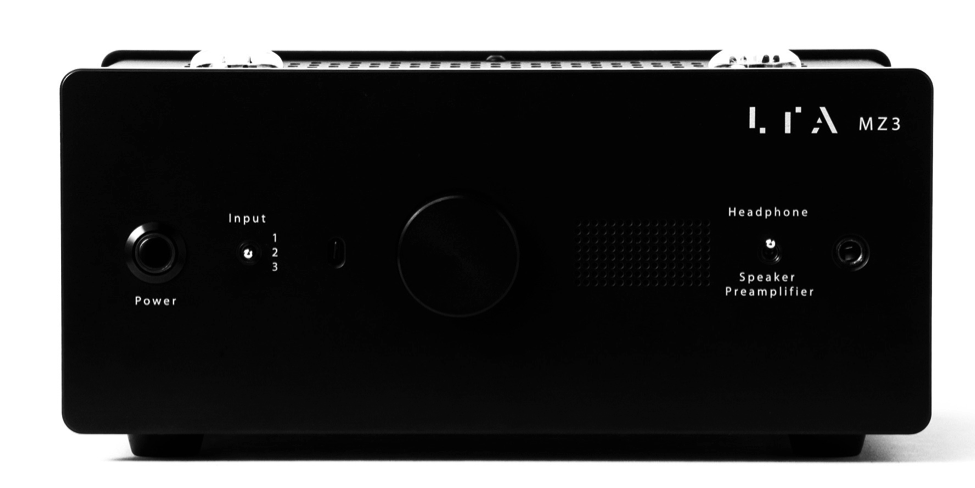
Mike Zivkovic, president of Teresonic, introduced me to David Berning’s MicroZOTL MZ2S integrated amp in a phone call. He told me that Linear Tube Audio was manufacturing the amp, and he was using it with his Magus speakers in the system at his home in Florida. He thought I should consider reviewing the combo.
The shock was when I found out that this amp puts out only a single watt. That’s right, it is a one-watt integrated amp, headphone amp and preamp. Mike assured me that it was a match made in heaven for my Teresonic speakers. So, I called Mark Schneider at LTA, and he sent me the amp. I have to admit there is a lot to be said for a great one watt!
A Little Amp History
From 2000 to 2007, The David Berning Company manufactured this design. Then, Mark Schneider, the founder of LTA, and David Berning came to an agreement for Mark to build some of David’s designs. All of the ZOTL amplifiers require hours of building by hand, which is currently done by Mark and his team in LTA’s Washington, D.C. workshop. Berning personally reviewed the initial units to ensure that the build quality met his extremely high standards.
For more information about the Linear Tube Audio MZ2S design and sound, read my first review of it with the Teresonic Magus speakers and then my follow up review of it in my reference system. When reviewing the original version of this amp, Harvey “Dr. Gizmo” Rosenberg said of David Berning, “David Berning’s mind is a tube.” Maybe this explains the shockingly good sound I’ve heard from these LTA amps.
Introducing the MZ3
This is a review about the Linear Tube Audio MZ3, the successor to the MZ2S. On the LTA website they say, “The microZOTL MZ3 incorporates almost all of the technology enhancements recently released in their new microZOTL Preamplifier, the microZOTL MZ3 is the result of years of refining the microZOTL circuitry. This is the highest expression of the amp as a preamp, headphone amp, and 1-watt speaker amp. In a beautiful new, low-resonance aluminum chassis designed by Fern & Roby, the microZOTL MZ3 contains all of the elements that we found improved the sound significantly.”
The MZ3 has 3 inputs, 2 preamplifier outputs, remote control and front panel controls and an LED digital front panel display. The power supply is external and has a separate power switch. There is a power umbilical cord that connects the amplifier to the external power supply.
I have always heard that Paul Klipsch said, “What the world really needs is a great five-watt amp.” The well-known audio reviewer, Dick Olsher, famously remarked, “The first watt is the most important watt.” Others have expressed this sentiment saying, “Who cares what an amplifier sounds like at 500 watts if it sounds like crap at one watt?” With this in mind, Nelson Pass created First Watt. Well, it turns out, if you own a pair of 103dB efficient speakers, what you really need is a great one-watt amp.
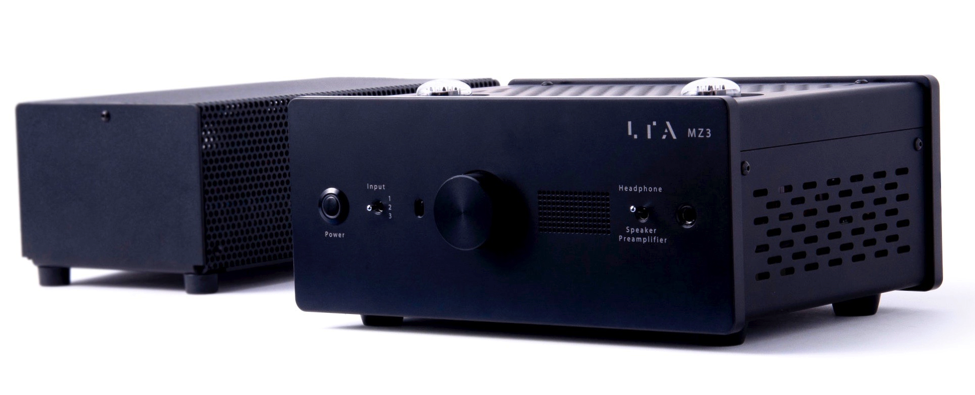
Now, I know there are very few people these days that can get by with a five-watt amp much less a one-watt amp. So for most, the MZ3 will be used as a phono amp or preamp. I am one lucky guy, because my Teresonic Ingenium XR speakers with their Lowther DX-4 drivers with silver-wound voice coils and a six-foot ETQWT transmission line enclosure with Helmholtz resonators are true 103dB efficient speakers. For these speakers, the LTA MZ3 has been the most anticipated product I have had come in for review in a long time. My only question was could it really sound better than the LTA MZ2S?
Technical Improvements of the MZ3
So what are the technical improvements of the MZ3 over the previous versions of “Berning’s Personal Amp” (this is what David Berning called the original little ZOTL amp) and the LTA MZ2S? To start with, it has a new and much more finished-looking, low-resonance aluminum chassis designed by Fern & Roby. It also has a digital interface that features an LED array display for volume, input and balance.
It also comes with a new remote-controlled stepped attenuator volume control that has 99 steps for each channel. The stepped attenuator is constructed of 1,025 steps of 50 ohms, with 100 positions selected to provide very fine resolution at the lowest volumes and a logarithmic control for higher volumes. Low noise, precision 1% Vishay Dale resistors and hermetically sealed silver contact relays are used for precise, isolated analog signal attenuation. Balance is achieved by creating a numerical offset, which is applied to the volume steps between the channels; the maximum balance differential is 16 steps. The offset is stored in memory so that the amplifier can automatically apply it when the amplifier is next powered on.
Other changes include improved input wiring that significantly shortens the signal path, and it now uses ceramic circuit boards in the amplifier. The power supply is also larger and more refined with a premium interconnect cable and no turn on thumps. There are also several integral component upgrades in the audio circuit.
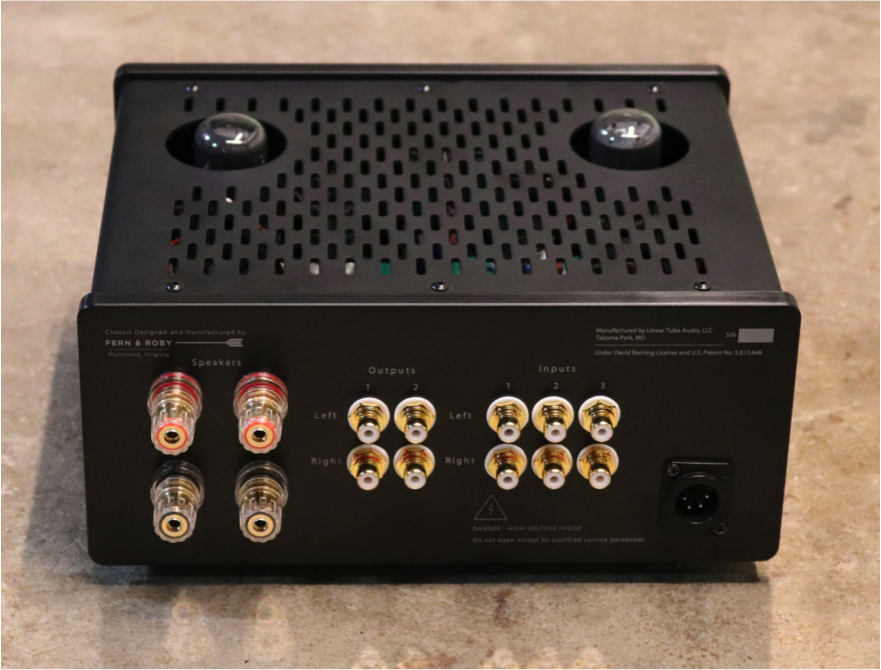
LTA supplies premium tubes to ensure you experience the amplifiers’ maximum performance right out of the box. It is shipped with two 12AT7 input tubes and two 12SN7 power tubes. There are jumpers on the amplifier board to enable you to use 6SN7s instead of the 12SN7s, if that’s your preference.
The MZ3 has a powerful auto-bias circuitry that enables the amplifier to automatically adjust to the optimal levels for the tubes, and no manual adjustments are required. The tubes have a very long life since the Bernig ZOTL circuitry operates the tubes at a very high frequency, and they use only a third of the current used by other tubes. New tubes will typically last for 10,000 hours of operation.
The linear power supply is user-switchable between 110/120 and 220/240 (100V linear supply is available for Japan). It uses dual banks of organic poly ultra-low ESR capacitors; that’s four times more the MZ2. The result is over 100KuF of output choke isolated storage. It uses what they describe as an oversized transformer secured with aluminum and brass mountings instead of steel. Regulation is performed using low noise Belleson Super Regulators. The current transformer controls the output protection circuit. It also comes with its own premium low noise shielded umbilical cable with premium silver contact with spring loaded XLR connectors to connect the power supply to the amp.
The MicroZOTL MZ3 as a One-Watt Speaker Amp
First, I listened to the MicroZOTL MZ3 as an integrated amp with my 103dB efficient Teresonic Ingeniuum XR speakers. The sources were my AMG V12 turntable and 12-inch Turbo tonearm with the DS Audio Master1 phono preamp and the Ds Audio W2 cartridge. The digital source was the Innuos Mini music server and the Boarder Patrol DAC SE.
Right out of the box, the MZ3 sounded quite beautiful but a little warm and a little slow compared to the MZ2S or the First Watt SIT-3. This didn’t really surprise me, but I just want to let you know. After two days of streaming music it sounded much better, but it took about four days for it to come into all of its glory.
In my review of the LTA MZ2S amp, I said, “It sounded so good and so different from my Pass Labs XA30.8 or the Wavac EC300B; the two amps I have lived with for so many years. Here is a quick list is the five ways that the LTA MZ2S was different and better:
- It is much quieter, which I found hard to believe.
- It’s much more detailed in a natural and musical way.
- It provides an exceptional see-through quality into the layers of the music.
- The scale is very accurate regarding each instrument.
- The soundstage is very coherent, solid and huge.”
Well the LTA ZOTL MK3 is even quieter, more detailed and is the most natural-sounding amp I have ever heard. It has the same see-through quality into the layers of the music, but the scale of the instruments is even more natural, and it has an even better tone. I’m not going to go over all the qualities that the MZ2S and MZ3 share, but I do encourage you to read my previous two reviews of the MZ2S (links provided at the beginning of this review). I will say the MZ3 didn’t disappoint me. Everything I heard from the MZ2S was there in the MZ3 plus some.
Like the LTA Ultralinear amp the MZ3’s glory starts with its ability to be both incredibly natural sounding yet nimble with both detail and timing. The bass has a rhythm that enables music to sound very alive and lifelike. Maybe the most important thing about this amp is how rich and beautifully it plays musical tones. The MZ3 pulls off a small miracle with its rich beautiful tone and its nimble detail, speed and micro-dynamics.
With the MZ2 the music seems to float effortlessly into the room and never seemed forced or the least bit strained. In a way that in my opinion only Class A tube amps can, the instruments and voices simply came to life in the room. With the MZ3, my system seemed to introduce fewer distractions in the space between the performers and myself; a trait I have heard from very few systems. The sound had a sensual and emotional experience that drew me into a performance.
As I listened to album after album, I could hear the textures, colors, tones and harmonics of the music in a way that was more moving than I have ever experienced in my system. The system’s timbre realism with individual instruments and voices was also the most satisfying I have experienced. What the MZ3 did better than any other amp I have had in my system was the way it involved me in a wonderful musical journey. I could hear the venue as the music is played in a hall, a club, an outdoor arena, or in a studio. I also played several of the Mahler symphonies that were recorded live at Davies Symphony Hall in San Francisco. Becky and I attend performances there often, and I could hear the same kind of spatial cues I’m use to hearing in a live performance in the same space.
I reached many of the conclusions above after I had spent quite some time listening to the MZ3 and then reinserted the MZ2S and listened to the same albums. Then, I put the MZ3 back in and listened once more.
Head-to-Head Comparison of Four Albums

Then, I chose four LPs for a day of comparing the two amps. I stared with one of my new favorites on vinyl, “Soul Journey” by Gillian Welch and David Rawlings. The comparison of the two amps was interesting on this album.
With the MZ3, the low frequencies were considerably clearer, with more resolution. The string tone was denser and more musical for both David’s picking and Gillian’s playing. It was also much easier to hear the individual notes, and they had better tone and timbre. There was also more of a sense of space and air around the low-frequency notes and much better harmonic detail and texture with the MZ3. Maybe the biggest difference in the two was the relaxed sound of the MZ3 with its improved clarity that allows the guitars and voices to sound so natural and alive.
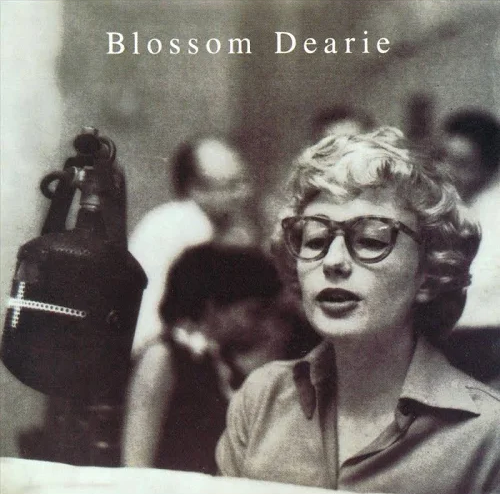
Blossom Dearie is one of my favorite female jazz artists. She was known for her recognizably light and girlish voice and soulful piano playing. Her self-titled album was recorded by Verve in 1956 and release 1957. I am lucky to own a mono, first pressing of this LP that is truly near mint or better.
Herb Ellis’ guitar and Ray Brown’s bass were fuller, more defined, and had better timbre with the MZ3. Brown’s bass also went deeper with the MZ3. Jo Jones’ drums also sounded better, carrying the rhyme of the melody better. The drums also had both more attack and were fuller. The drums also had much better reverberant space and decay.
Her piano sounded stronger from top to bottom of the piano’s range, and it had more realistic scale. By far and away the biggest difference was her voice, which was more articulate and nuanced. I noticed a really big improvement listening to her unique voice. And yes, I know it’s a mono recording!
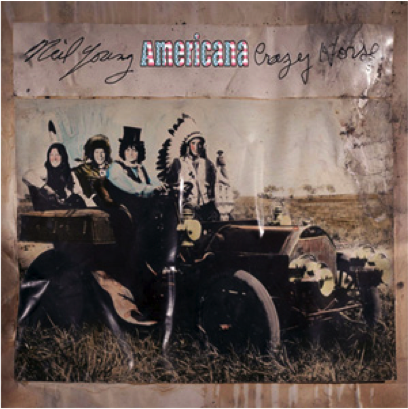
Now, for something very different, I listened to “Americana” by Neil Young and Crazy Horse. This seems to be a love it or hate it album. I love it, and I have shared it with several people who have also loved it. Of all of the folk songs from our childhood, this still without a doubt what I call “grungy rock music.” It’s meant to be played loud and should sound powerful.
When reviewing the MZ2S I said, “With it being a one-watt amp, I thought maybe I should also give it some real rocking music. So, I put on Neil Young and Crazy Horse’s Americana LP. I was even more amazed, I have listened to this LP many times and with many people, but I was not prepared for how much bigger the sound was, how much air there was, and the incredible dynamics and even more incredible micro-dynamics. It wasn’t just those things though; it had that scary alive sound that I remember from the Wavac EC300B and the controlled bass of the Pass Labs XA30.8.”
Well, with the MZ3, this album rocked even harder with incredible bass and power. Sometime it’s hard to accept that this is a single-watt tube amp.
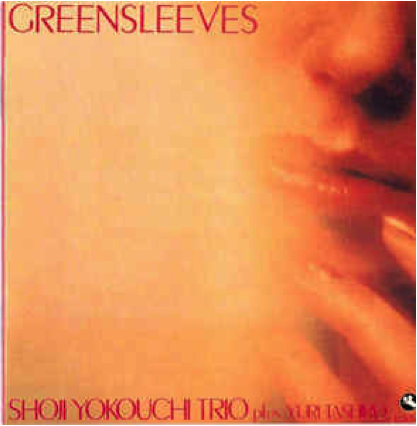
The last album I used in the comparison was “Greensleeves” from the Japanese label Three Blind Mice. This album features the Shoji Yokouchi Trio plus Yuri Tashiro on the Hammond B3 Organ. It is an exciting, bold, extremely dynamic and very emotionally involving musical performance.
Tashiro’s playing of the B3 is the heart and soul of this performance, and it sounds considerably more like an organ than it did on the MZ2S, the First Watt SIT-3 or even the Pass XA25. With the MZ3, the performance had more soul.
The album starts with one of the most emotionally-involving versions of “Willow Weep For Me” that I have ever heard, and this is followed by great interpretations of “Moanin’” and “Misty.” The B side has three incredible jazz interpretations of “New Orleans Sunday.” With the MZ3, these songs sounded even more like real music than I have heard in my system. I had an audio buddy over to listen to the system with this little amp. We played these four LPs and with either of the MicroZOTL amps, and he just could not believe he was listening to a single-watt amp.
Still, the MZ3 always sounded more refined, more detailed and especially more relaxed and natural. Overall with the MZ3 this album sounded beautiful with wonderful harmonics that allowed me to hear the many layers and textures of the music.
The MZ3 also enabled us hear the deep powerful bass of the organ in this performance as well as the beautiful and delicate acoustic guitar playing. The bass riffs were powerful, and the drums and cymbals were very realistic.
Conclusion
I am very pleased to be able to write this review. This review is of a very specialized proud; just how many people can use a 1-watt amp? I know the answer is not many, but there are more and more people getting into high efficiency speakers and there are those who don’t listen very loud. All I can tell you is that I’m one of the lucky ones who can use such an amp, and this is the best amp I have ever heard in my system.
The one amp that I have had in my system that may have sounded most like the MicroZOTL MZ3 was the ASR Emitter Integrated amp that cost in the mid five figures. It was also was so large and heavy that it came on a pallet. Having this amp in the house brought the sound of the ASR to mind.
If you can in anyway use a one-watt amp, the MicroZOTL MZ3 is a very easy recommendation. I will be writing a follow up review of the LTA MicroZOTL MZ3 soon as a preamp and headphone amp.
Product Specifications and Price
For complete product specifications and the retail price, please see this link to the Linear Tube Audio website.

So you like it then…
Geoffrey,
Liked it very much. As I said in the review, “If you can in anyway use a one-watt amp, the MicroZOTL MZ3 is a very easy recommendation.” I stand by that recommendation.
Any thoughts yet on the MZ3 as a headphone amp? I’ve liked the idea of a cooler-running (and great sounding) tube-based amp like the MZ2, and have raised my sights (budget) to accommodate headphones like either MrSpeakers Ether2 or the HiFiMan HE-1000s – and a “better” amplifier with which to power them. Some of us are keen to hear: is it as pleasurable to hear and competent for use as a headphone amplifier as it is as a preamp or (small) speaker amplifier?